Bust of Trajan
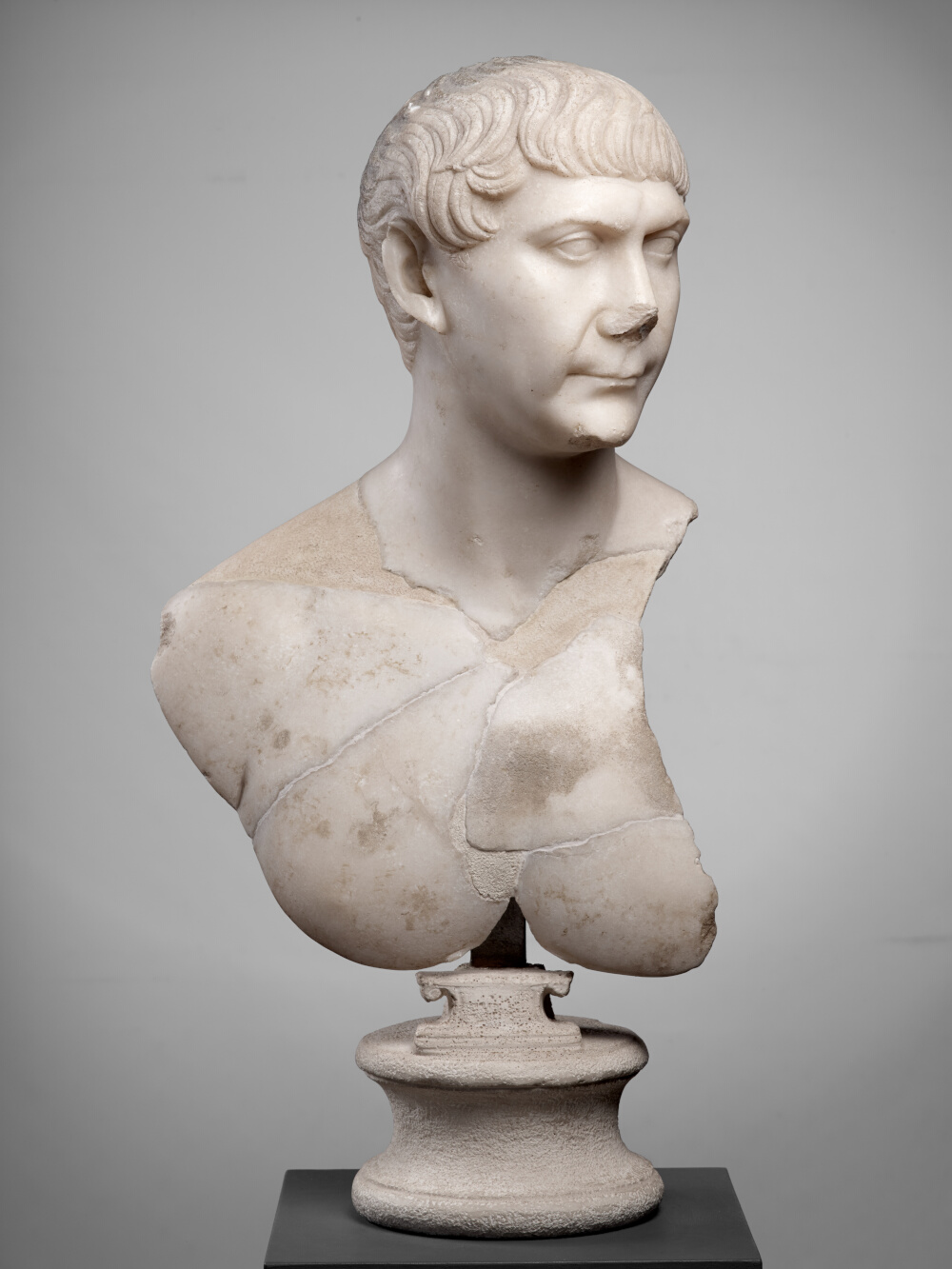
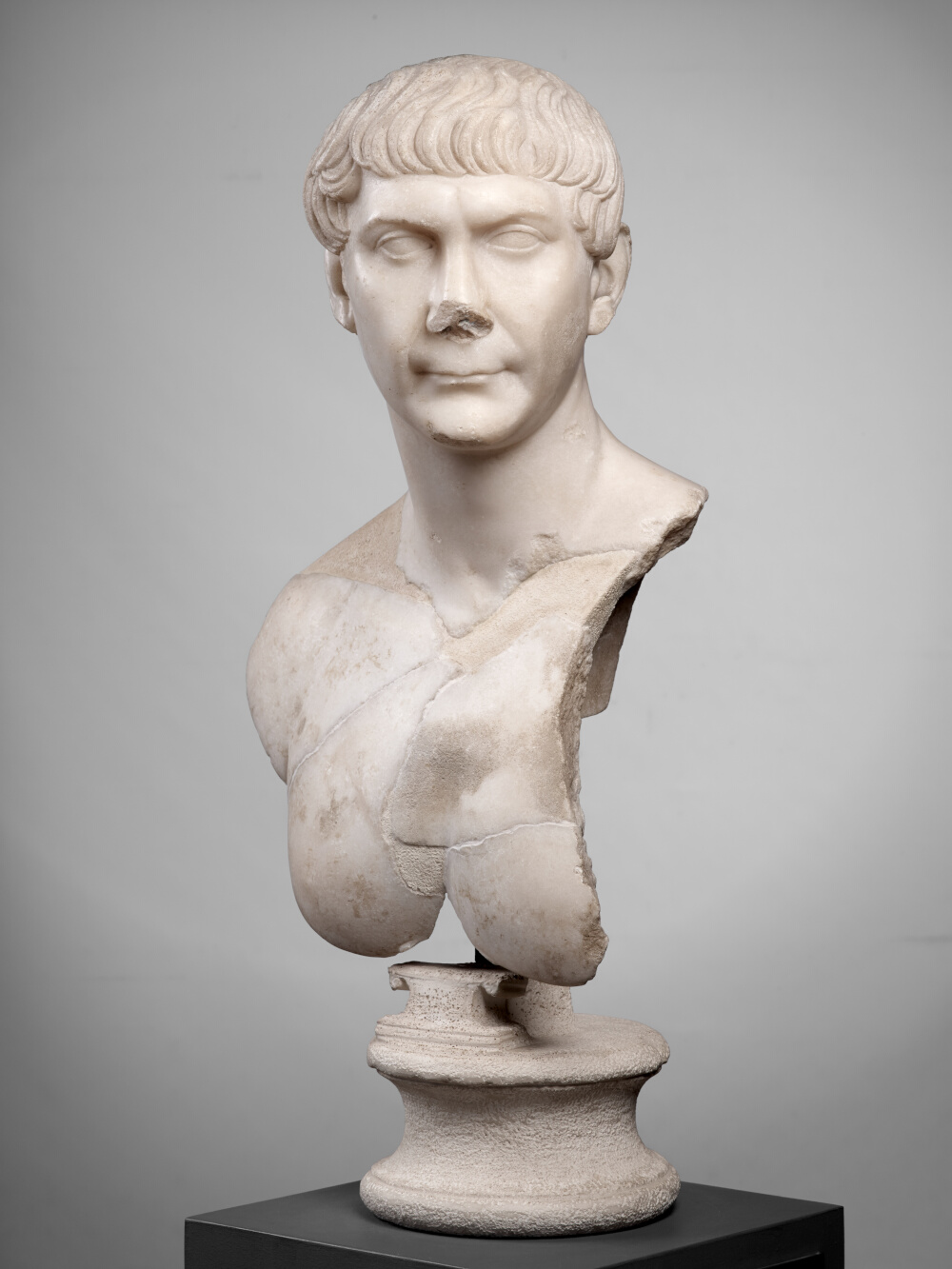
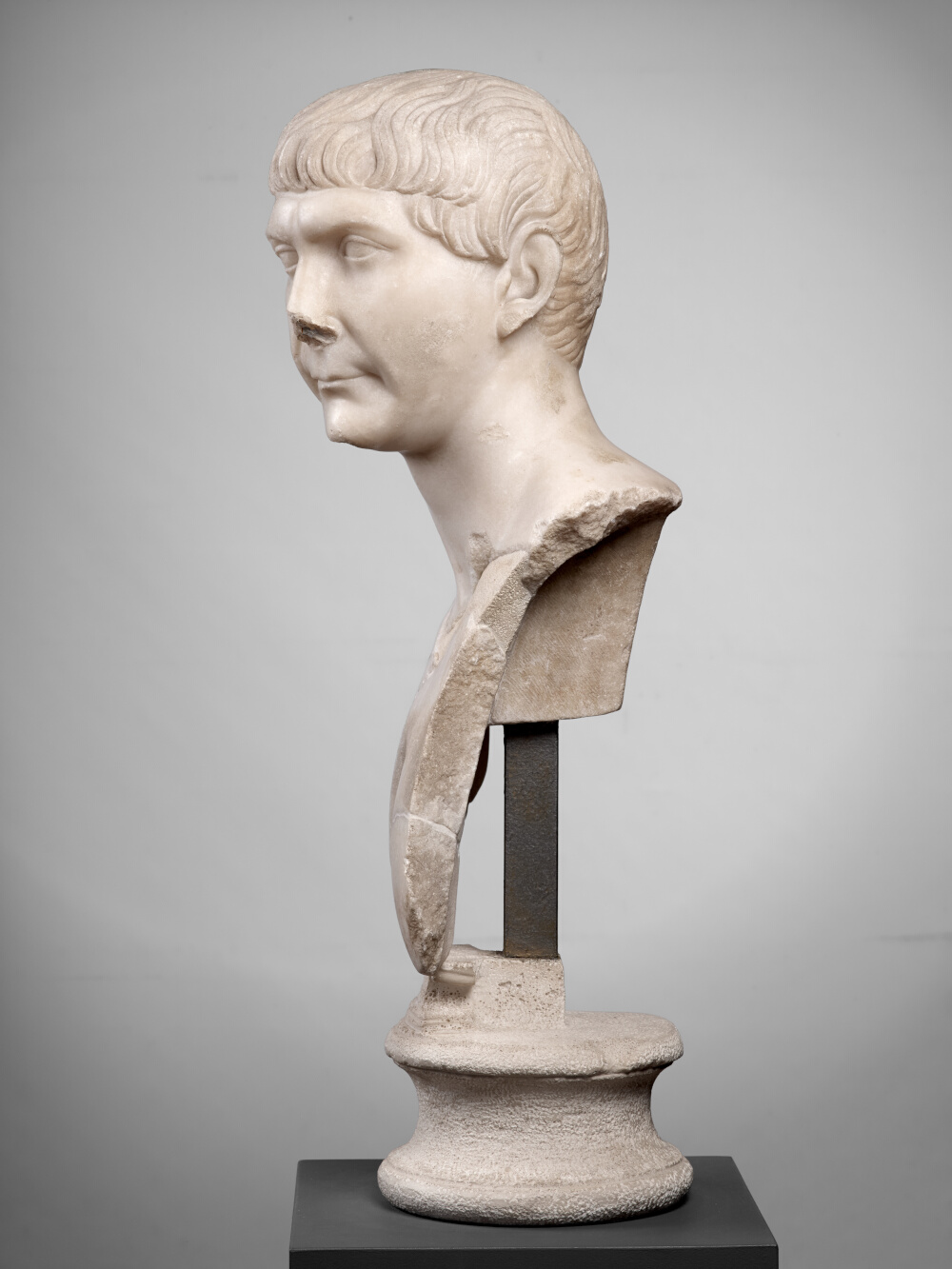
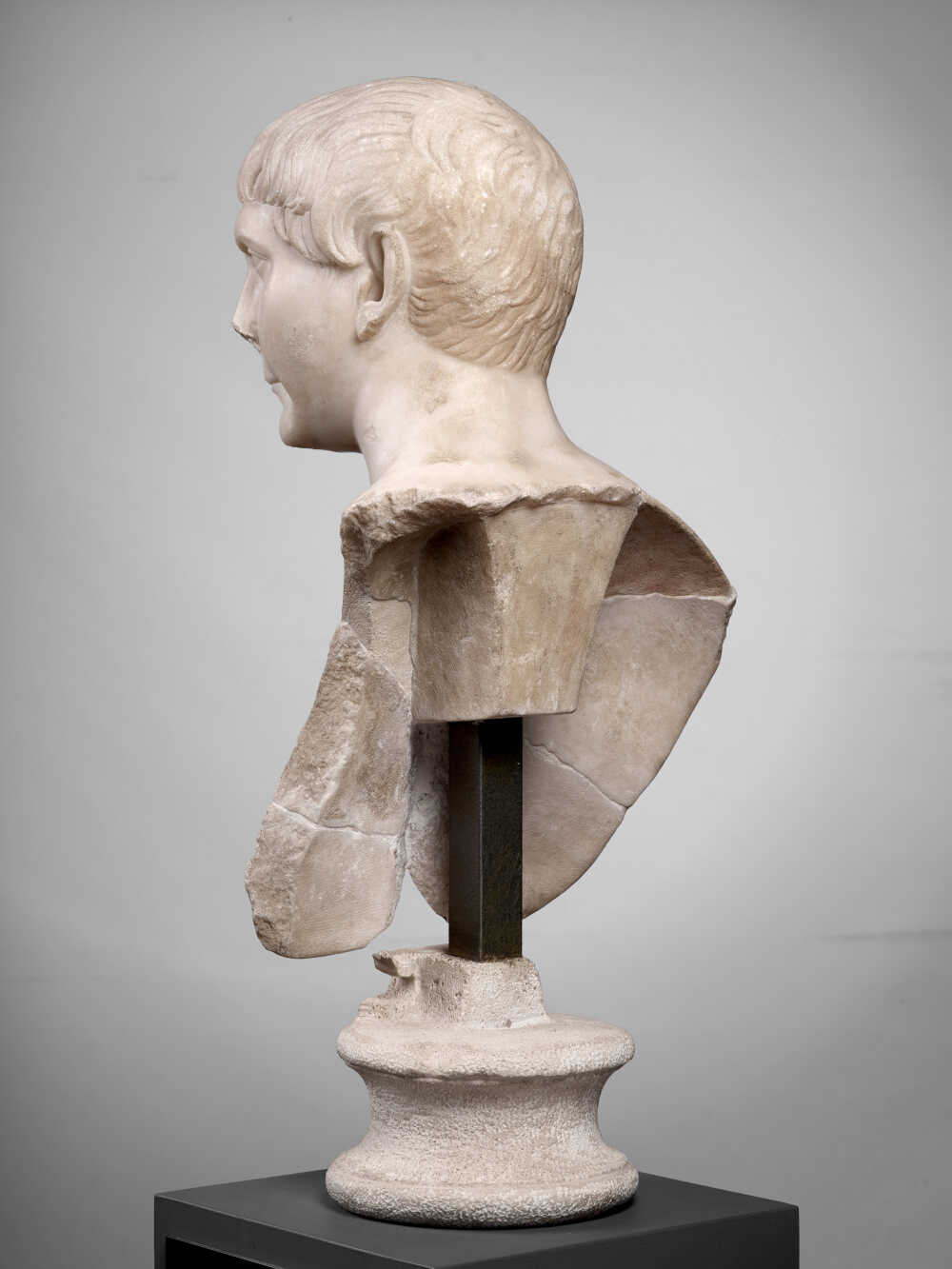
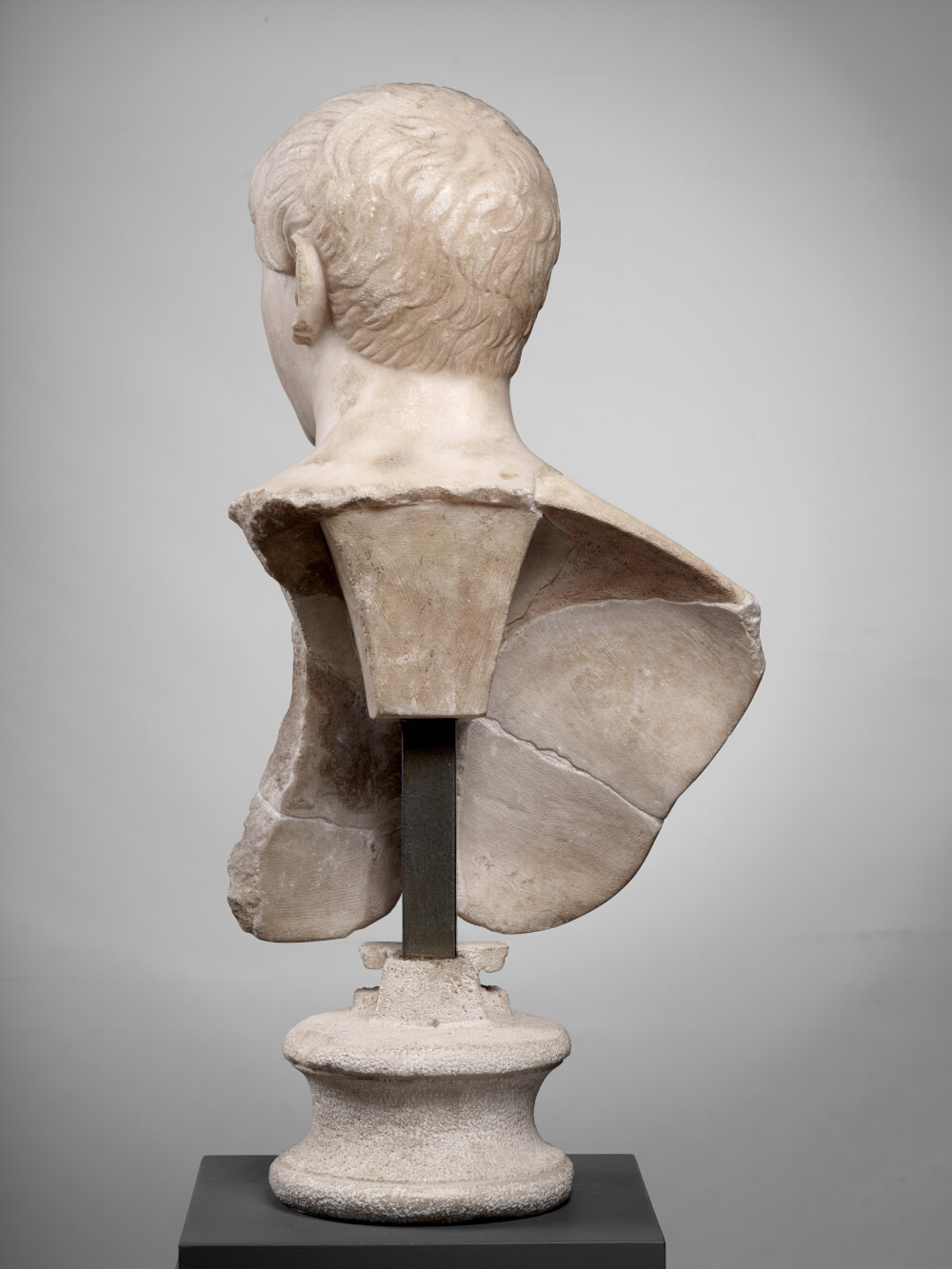
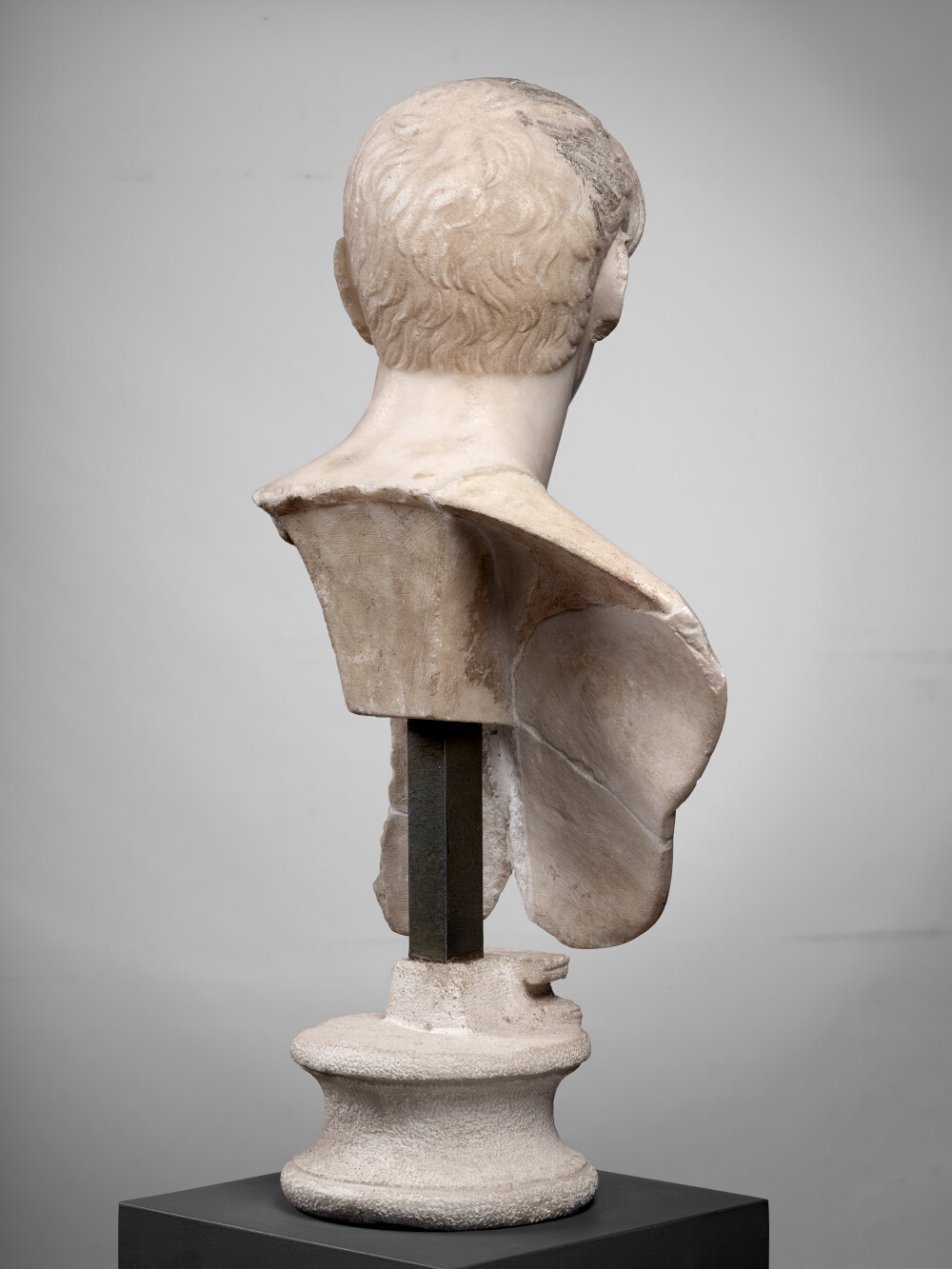
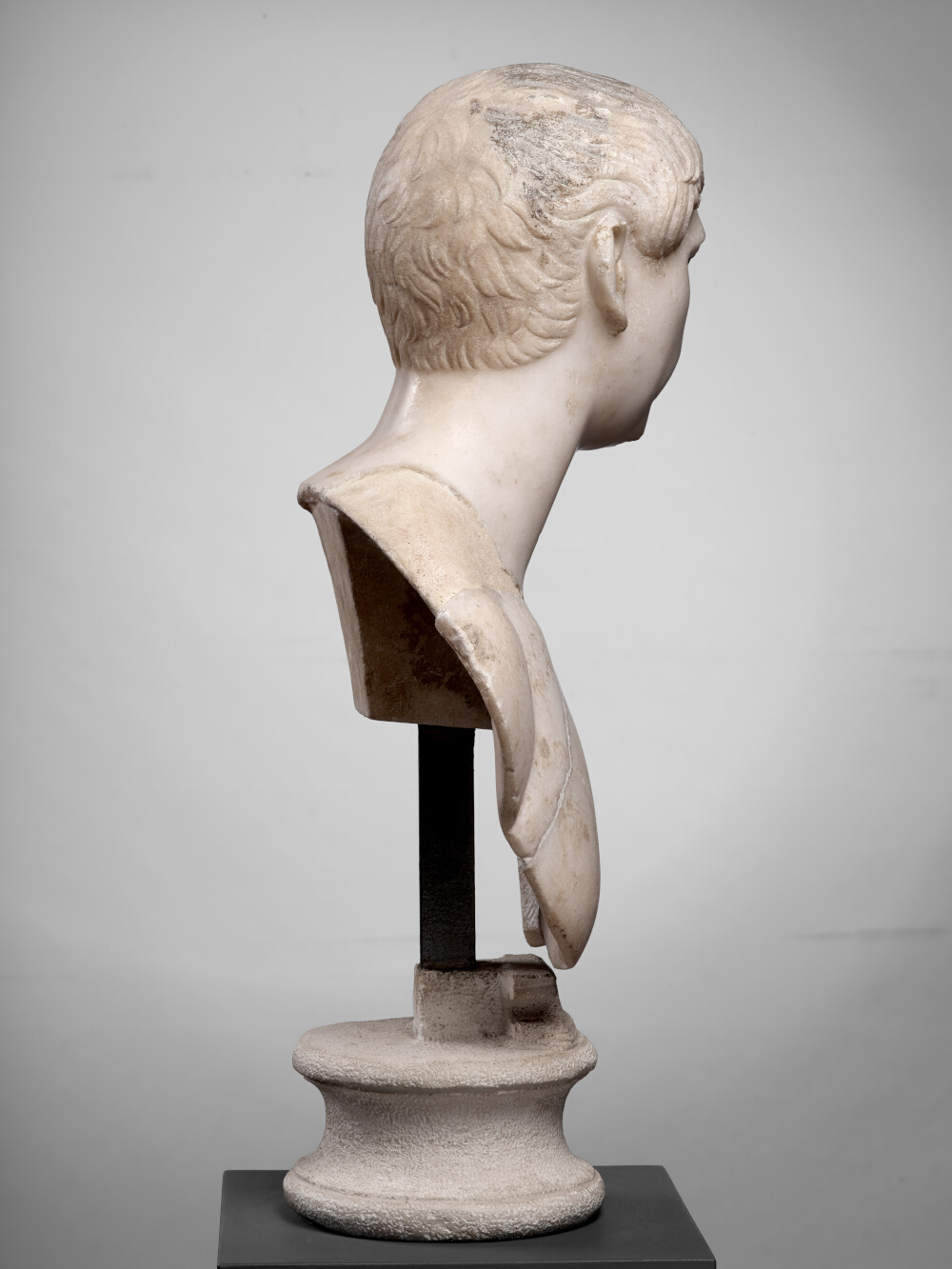
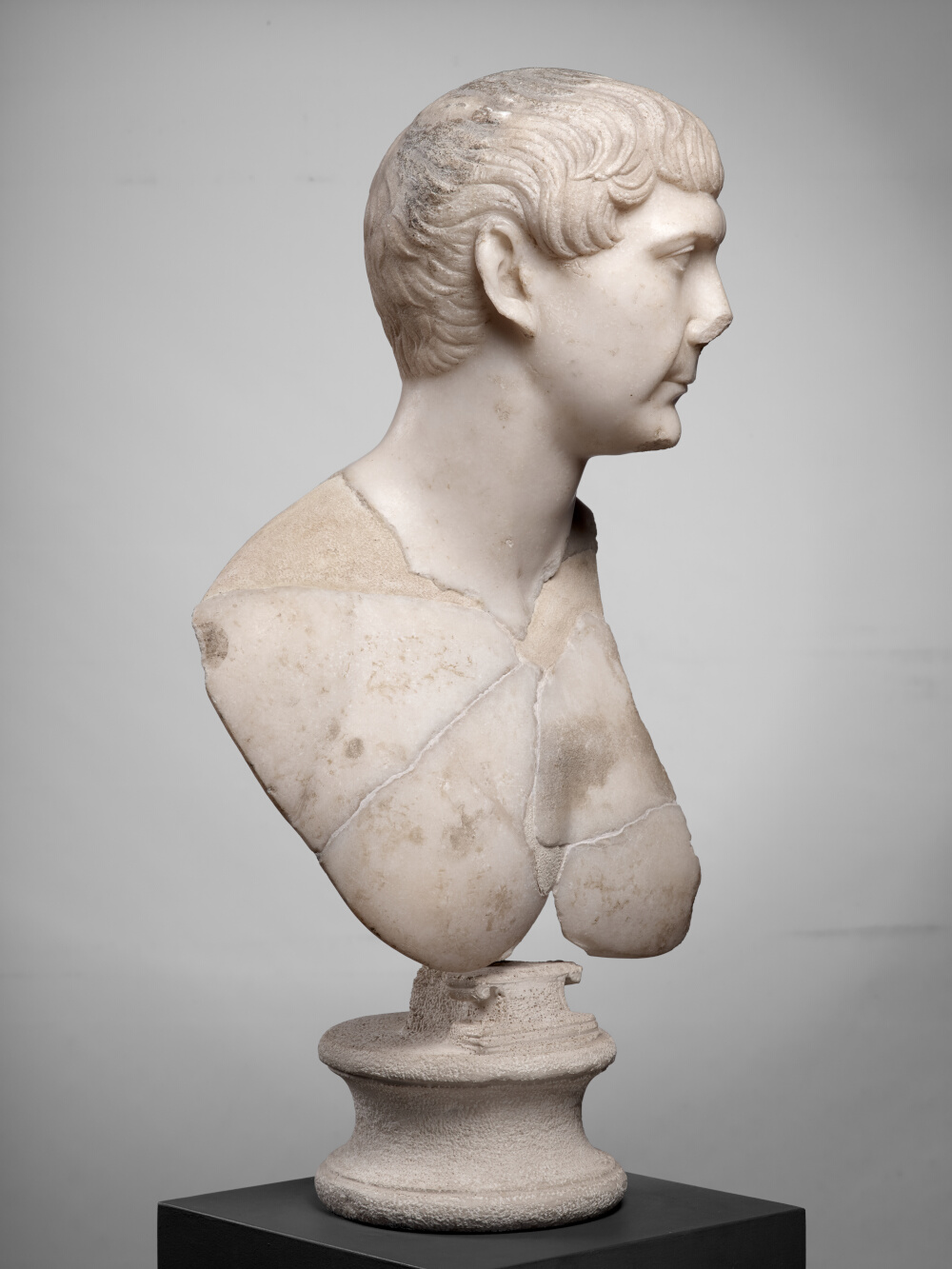
- Biographic data
- 53 - 117
Emperor from 98 to 117 - Date de création
- Between 108 and 113
- Type
- Of the "sacrificial" type
- Material
- Carrara marble
- Dimensions
- H. 56 x l. 36 x P. 25 (cm)
- Inventory number
- Ra 117
- Photo credits
- Daniel Martin
The naked torso may originally have been partly covered with the aegis (the armour of the goddess Athena/Minerva, given by Zeus/Jupiter), as shown by two other busts kept in  Copenhagen and Munich. In addition to this cuirass, the Danish bust boasts an additional calyx of acanthus leaves at its base. These features explain the large and rounded part that is missing on the left shoulder of the Chiragan bust, as well as the very peculiar triangular gap between the two pectorals.
Copenhagen and Munich. In addition to this cuirass, the Danish bust boasts an additional calyx of acanthus leaves at its base. These features explain the large and rounded part that is missing on the left shoulder of the Chiragan bust, as well as the very peculiar triangular gap between the two pectorals.
The aegis first appeared in portraits of Alexander the Great, and served as a reminder of the sovereign’s divine filiation. It is relatively frequent in Trajan’s coinage, right from the first monetary issues. It is a particularly enlightening testimony to the « Jovian (Jupiter-related) theology of imperial power » that characterised the reign of the Optimus Princeps (best ruler), a doctrine echoed by the writer Pliny the Younger in his « Panegyric in praise of Trajan ». Seeing as the Empire had reached its widest territorial expansion, the emperor’s universal domination could not have been better represented.
The bowl cut and hair combed from back to front on the earliest portraits of the Princeps is more complex here, and heralds that of the portraits produced during the reign of Hadrian, his successor. The arrangement of the hairs of the fringe and temples is portrayed in keeping with a very specific pattern, which appears in scenes depicted on Trajan’s Column in Rome, where the emperor is seen performing a sacrifice. Such is the origin of the name given to this new iconographic type, and it is undoubtedly one of the last, if not the last of his reign. As already said, it is confirmed on Trajan’s Column, and therefore predates this dedication dated 12th May 113.
According to J.-C. Balty 2012, Les portraits romains, 1 : Le siècle des Antonins, 1.2 (Sculptures antiques de Chiragan (Martres-Tolosane), Toulouse, p. 102-112.
Bibliography
- Balty 1977 J.-C. Balty, « Un nouveau portrait de Trajan, » Les cahiers de Mariemont. Bulletin du Musée royal de Mariemont, 8, pp. 45–62. no 108 p. 60
- Balty, Cazes, Rosso 2012 J.-C. Balty, D. Cazes, E. Rosso, Les portraits romains, 1 : Le siècle des Antonins, 1.2 (Sculptures antiques de Chiragan (Martres-Tolosane), Toulouse. p. 65, fig. 60. p. 104-111, fig. 28-39. p. 261, fig.192
- Braemer 1952 F. Braemer, « Les portraits antiques trouvés à Martres-Tolosane, » Bulletin de la Société Nationale des Antiquaires de France, pp. 143–148. p. 145, Trajan II
- Cazes et al. 1999 D. Cazes, E. Ugaglia, V. Geneviève, L. Mouysset, J.-C. Arramond, Q. Cazes, Le Musée Saint-Raymond : musée des Antiques de Toulouse, Toulouse-Paris. p. 122
- Espérandieu 1908 É. Espérandieu, Recueil général des bas-reliefs de la Gaule romaine, 2. Aquitaine, Paris. p. 64, no 956
- Fittschen, Zanker 1985 K. Fittschen, P. Zanker, Katalog der römischen Porträts in den Capitolinischen Museen und den anderen kommunalen Sammlungen der Stadt Rom, Mainz. p. 43, no 44, réplique 5
- Gross 1940 W.H. Gross, « Bildnisse Traians, » Das römische Herrscherbild, 2, 2. no 64
- Joulin 1901 L. Joulin, Les établissements gallo-romains de la plaine de Martres-Tolosane, Paris. p. 115, pl. XVII, no 261 d
- Mansuelli 1958 G.A. Mansuelli, Galleria degli Uffizi : Le sculture, Rome. p. 82
- Pugliese Carratelli 1997 G. Pugliese Carratelli, Enciclopedia dell’arte antica classica e orientale : secondo supplemento, 1971-1994, Rome. p. 962-965
- Rachou 1912 H. Rachou, Catalogue des collections de sculpture et d’épigraphie du musée de Toulouse, Toulouse. p. 59, no 117
- Rosso 2006 E. Rosso, L’image de l’empereur en Gaule romaine : portraits et inscriptions (Archéologie et histoire de l’art), Paris. p. 453-455 no 216
- Sánchez Montes, Rascón Marqués 2006 A.L. Sánchez Montes, S. Rascón Marqués, Civilización. Un viaje a las ciudades de la España Antigua. Exposición, Antiguo Hospital de Santa María la Rica en Alcalá de Henares, 3 de octubre de 2006 -7 de enero de 2007. p. 210
- Centro de Exposiciones Arte Canal 2007 Centro de Exposiciones Arte Canal, Roma S.P.Q.R : Senatus Populus Que Romanus. Exhibition Centro de Exposiciones Arte Canal, Madrid, 20 november 2007 - 2 march 2008, Madrid. p. 92-93, no 17
- Musée Saint-Raymond 2011 Musée Saint-Raymond, L’image et le pouvoir : le siècle des Antonins. Exhibition, Musée Saint-Raymond, Toulouse, 19 November 2011 - 18 March 2012, Toulouse. p. 24
- Musée Saint-Raymond 1995 Musée Saint-Raymond, Le regard de Rome : portraits romains des musées de Mérida, Toulouse et Tarragona. Exhibition, Mérida, Museo nacional de arte romano ; Toulouse, Musée Saint-Raymond ; Tarragone, Museu nacional arqueològic de Tarragona, 1995, Toulouse. p. 215
To cite this notice
Capus P., "Bust of Trajan", in The sculptures of the roman villa of Chiragan, Toulouse, 2019, online <https://villachiragan.saintraymond.toulouse.fr/en/ark:/87276/a_ra_117>.